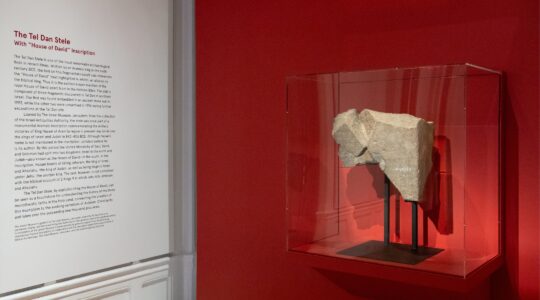Candlelighting: 5:07 p.m.
Torah: Ex. 25:1- 27:19
Haftorah: I Kings 5:26-6:13.
Havdalah: 6:09 p.m.
‘They shall make an ark of acacia trees… Cast for it four gold rings… Into these rings you must insert the [two] poles of acacia trees which you are to overlay with gold, and with which you are to carry the ark… You shall place into the ark the Testimonial Tablets which I will give you” [Exodus 25:10-16].
The first of the Sanctuary’s accoutrements is the Ark of the Covenant, into which the Tablets of the Ten Commandments are to be deposited. These Tablets are the written record of the Revelation at Sinai, under whose rubric God transmitted the 613 Commandments of the Torah.
Herein lay the Constitution of this newly formed nation, the message by which a holy nation was to be fashioned and the mission with which blessing was to be brought to all the families on earth. Hence, the production of this ark must contain many symbolic and instructive teachings; its very architecture is therefore Divinely commanded.
The wood of the sacred Ark came from acacia trees (atzei shittim), a rare type of tree that grows even in a desert wilderness. It is therefore an early forerunner of the freshness and vitality of the cedars of Lebanon which, in the days of our redemptive Messiah, will spread its force throughout Israel and transform arid deserts into founts of water: “I will open up streams… turn the desert into ponds, the arid land into springs of water. I will plant cedars in the desert, acacia and myrtle and the oil tree… ” [Isaiah 41:18-20].
The fact that the sacred Ark, receptacle for the Torah, the Tablets of Testimony, was fashioned from the acacia tree emphasizes the fact that the Revelation was given to Israel, not in the Land of Israel, not from Mount Moriah, but rather from the open no-man’s land of the Sinai wilderness. This, our Sages teach us, is because “had the Torah been given in the Land of Israel, the Israelites could have demanded it only for themselves, arguing that the nations of the world have no share in it; now, anyone who wishes to accept it, may come and accept it” [Mekhilta de R. Yishmael, BaHodesh 1, Lauterbach ed.].
Moreover, many botanists and researchers claim that the miraculous “burning bush” was actually a semi-parasitic plant which covers acacia trees, the Loranthus acaciae, whose fire-red blossoms seemed to Moses to be a fiery flame which was burning, but which did not consume the tree it surrounded [Tree and Shrub in our Biblical Heritage, Nogah Hareuveni].
The message and mission of the wood from the acacia tree is indubitably clear; God entrusted us, inflamed us, with His “fiery law of love” (esh dat) to become a holy nation of priest-teachers to humanity, to transform the wilderness wasteland of a corrupt world into a blooming Garden of Eden of fruits and flowers, piety and productivity, during the Time of Redemption.
The rest of the Ark’s symbolism is easy to interpret. The wooden Ark was placed within a larger, outer box made of pure gold, and it itself enclosed a smaller, inner box of pure gold so that the wooden Ark which encased the Tablet of Testimony was formed from the outside, as well as from the inside, with pure gold. Gold symbolizes eternity — it never decays; it is critical that the golden preciousness of God’s Torah must be expressed to the outside in human words and deeds and must emanate from an inner purity of heart, soul and mind.
The essential, central Ark was made of wood, as we have seen, because a tree, unlike sterile gold, grows, develops branches, and often gives forth new fruit. Two staves, likewise made of wood, were inserted into gold rings on the sides of the Ark, so that the Ark — the Torah — would move, progress and travel along with the People of Israel.
Ours must be a living Torah. Our Torah must be found wherever the people of Israel happen to be. Our Torah must respond with commanding vision to every new era, to every fresh possibility. Our Torah must apply eternal truths to changing conditions, maintaining deep roots, which dig deeply into the depths of ancient nutrients but equipped with the necessary wings to fly into hitherto uncharted heights; it must bring us close to the One who revealed His will in the wilderness and endowed us with the wisdom and wherewithal to perfect his world.
Herein lies the secret of the cherubs, in human form with wings poised heavenwards, ultimate guardians of an eternal people with an eternal Torah. “They shall make for Me a Sanctuary so that I may dwell in their midst,” transforming the world into a house of communion and communication with Me for all the nations of the world.
Support the New York Jewish Week
Our nonprofit newsroom depends on readers like you. Make a donation now to support independent Jewish journalism in New York.
Rabbi Shlomo Riskin is chancellor of Ohr Torah Stone and chief rabbi of Efrat.
The New York Jewish Week brings you the stories behind the headlines, keeping you connected to Jewish life in New York. Help sustain the reporting you trust by donating today.




